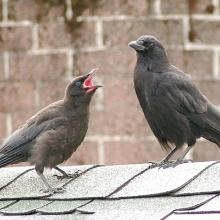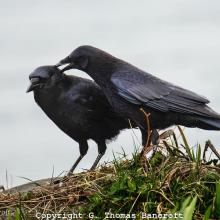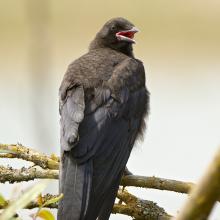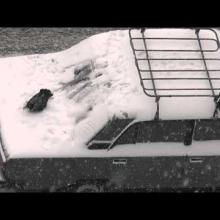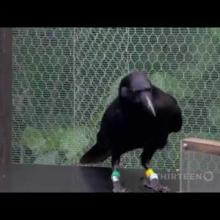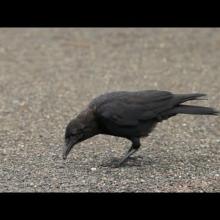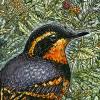

Join BirdNote tomorrow, November 30th!
Illustrator David Sibley and actor H. Jon Benjamin will face off in the bird illustration battle of the century during BirdNote's Year-end Celebration and Auction!
Most birds are mostly waterproof. Their feathers, aided by oil from preen glands, keep them pretty watertight. So why do birds avoid flying during rainstorms? It may have more to do with the air than with the water. Rainstorms tend to occur when atmospheric pressure is low. Air in a low-pressure system is less dense. But it’s dense air that gives birds the aerodynamic lift they need to take wing. Falling rain and high humidity make air even less dense. Many birds perch and wait out a storm. Afterward, birds once again take to the skies.
BirdNote®
Flyin’ in the Rain
Written by Bob Sundstrom
This is BirdNote.
[Sounds of a rainstorm]
During a rainstorm, you’re more likely to see birds perched and hunkered down than flying around. Most birds are mostly waterproof. Their feathers, combined with oil from preen glands*, keep them pretty watertight.
So why do birds avoid flying during rainstorms? It’s not just about getting wet. It may have more to do with the air than with the water. [Sounds of a rainstorm]
Storms alter the medium in which flight takes place: the air itself. Rainstorms tend to occur when atmospheric pressure is low. Air in a low-pressure system is less dense. But it’s dense air that gives birds the aerodynamic lift they need to take wing. Falling rain and high humidity also add lots of water molecules to the air. That water takes up space in the air, making it even less dense.
So rather than fly, many birds perch and conserve energy during a storm. They sit it out under the cover of a tree. Or perch on a fence wire facing into the wind, reducing their air resistance — and limiting the loss of precious body heat.
But when the storm passes, birds once again take to the skies.
For BirdNote, I’m Mary McCann.
###
* The feathers zip together like Velcro. This was discovered in research done on cleaning oiled birds. The preen gland helps to condition feathers and keep them supple.
Bird sounds provided by The Macaulay Library of Natural Sounds at the Cornell Lab of Ornithology, Ithaca, New York. #16 Thunderstorm Nature Sound Essentials and #47 Deciduous Forest Morning recorded by Gordon Hempton.
BirdNote’s theme music was composed and played by Nancy Rumbel and John Kessler.
Producer: John Kessler
Managing Producer: Jason Saul
Associate Producer: Ellen Blackstone
© 2017 Tune In to Nature.org July/August 2017/2019 June 2022 Narrator: Mary McCann
ID# flight-13-2017-07-14 flight-13
Script mainly from this source: http://ornithology.com/birds-flying-in-the-rain




